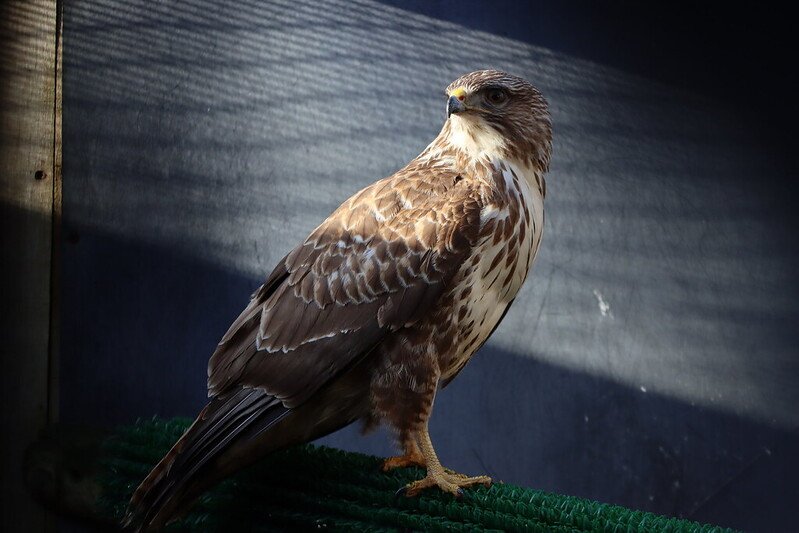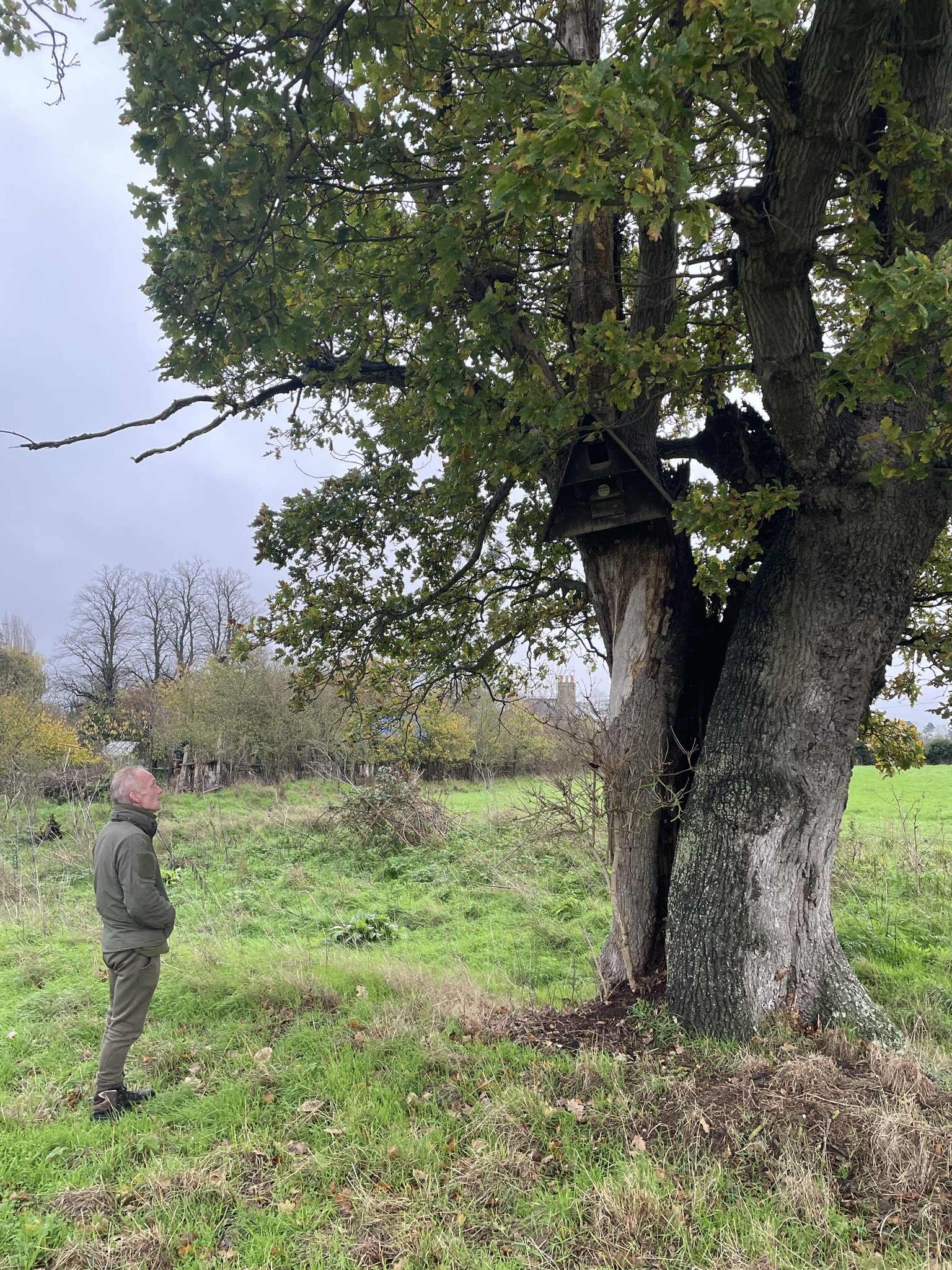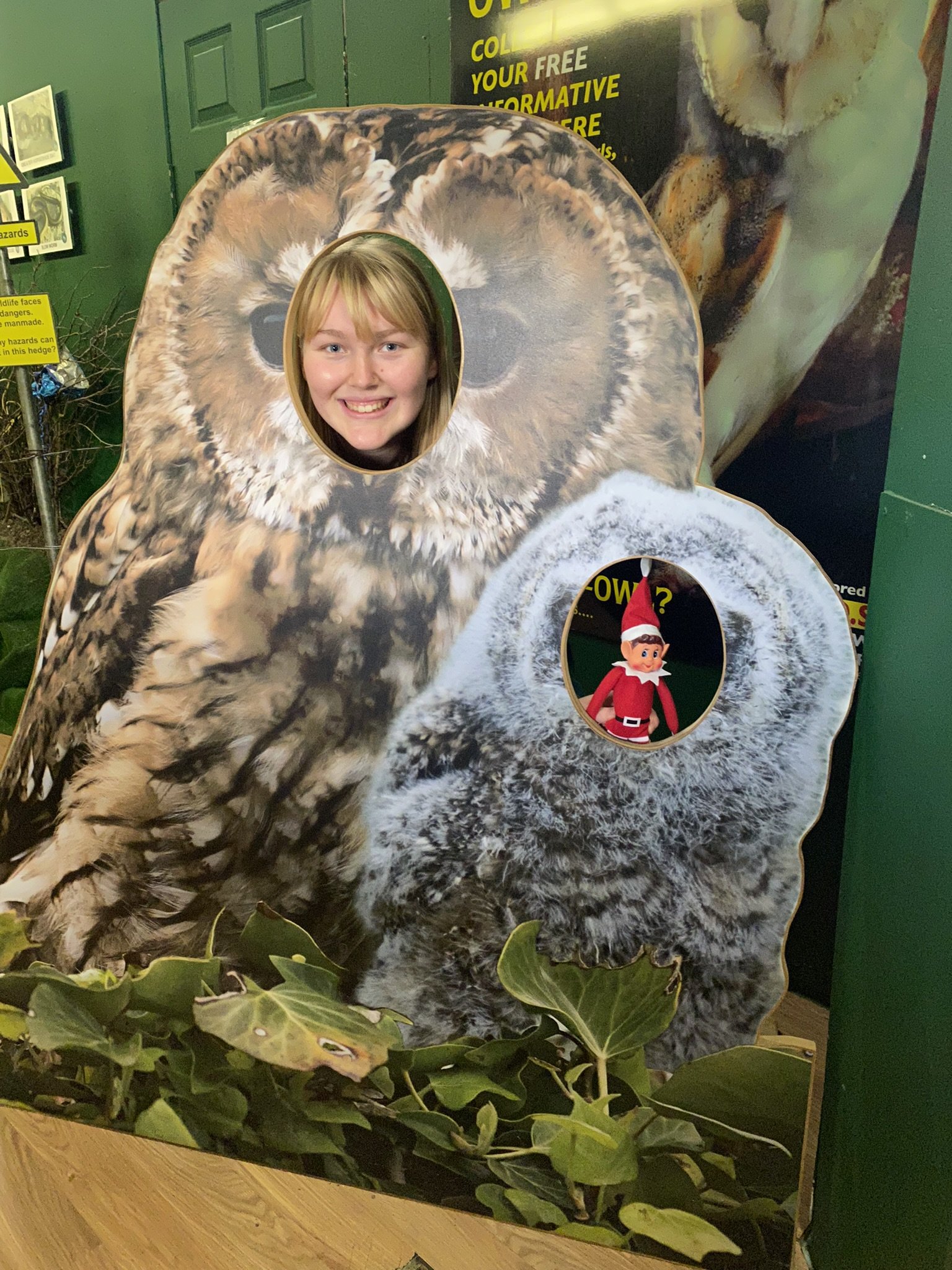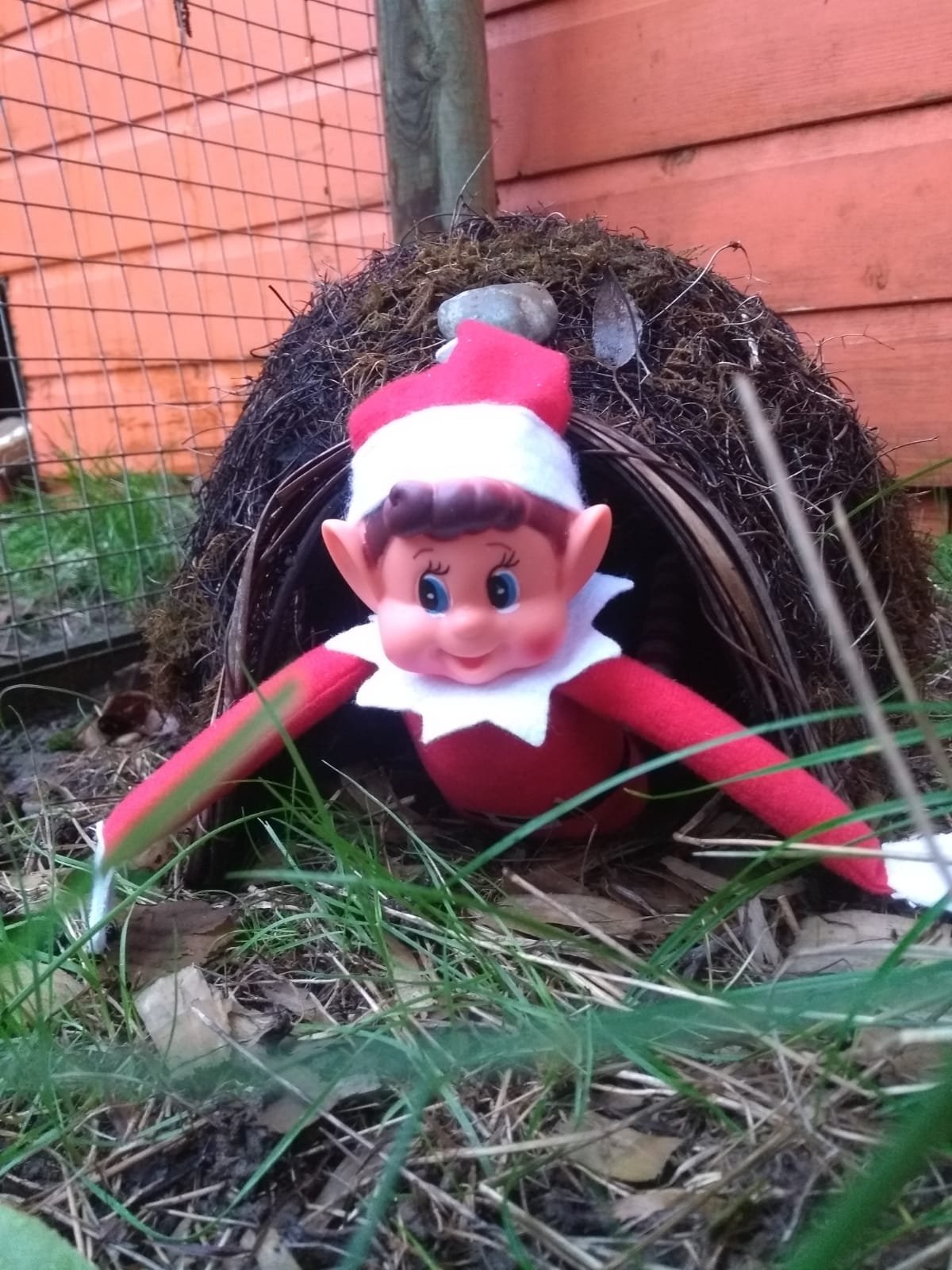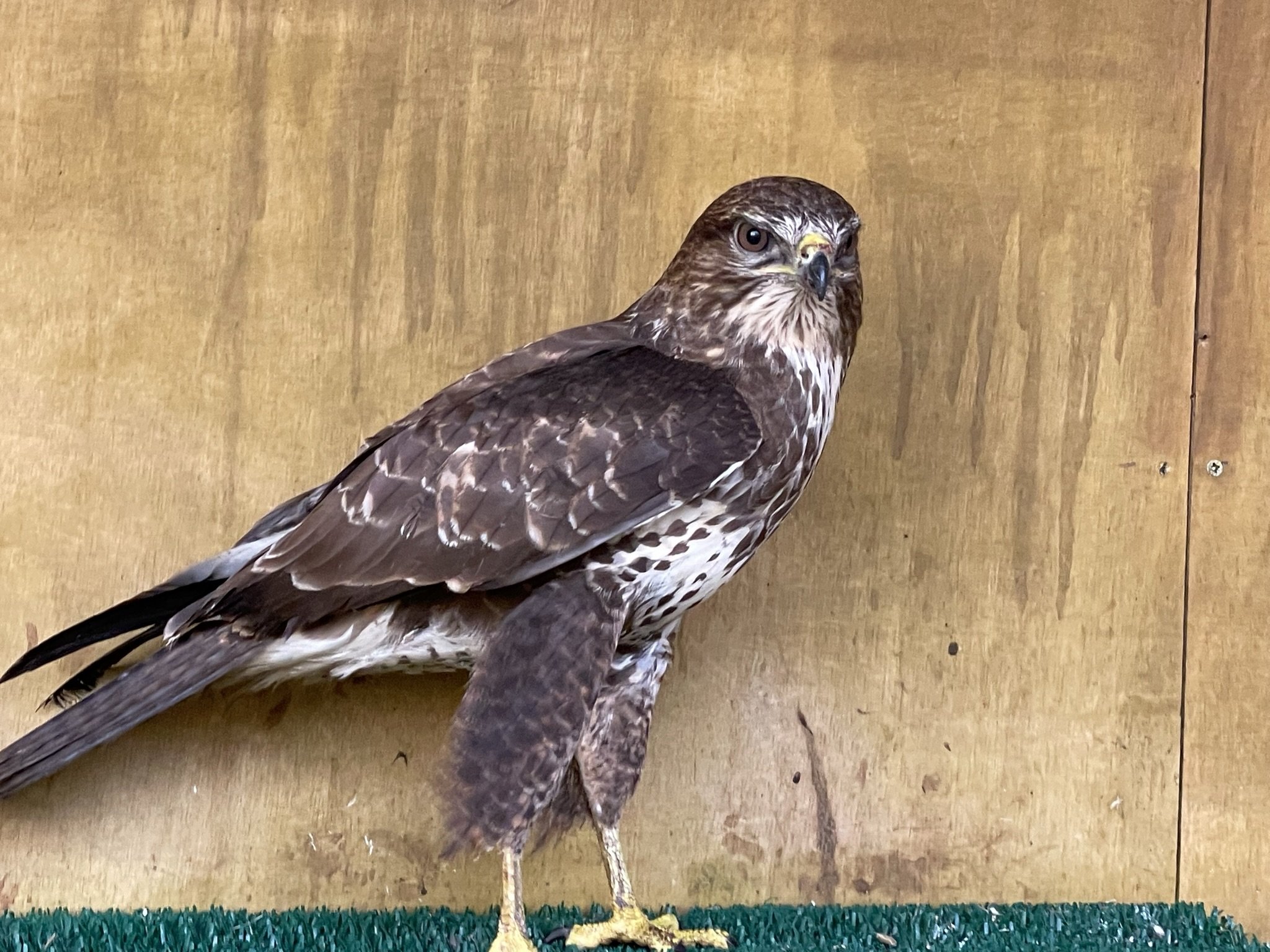Sorry, we couldn’t quite make it to five!
Just before Christmas we invited Dr Hugh Hanmer from the British Trust for Ornithology to ring our Raptor Hospital patients before their release.
Hugh supervised Jess ringing Buddy the Buzzard, and three Tawny Owls, named Cinders, Snowball and Wotsit. They were also able to age the birds, and took biometric measurements to try and determine their sex. All of the birds on this occasion were in the overlap between males and females, so were left unsexed. If they are caught again in the future, it may be possible to sex them during the breeding season.
Hugh checking Buddy’s wing for any signs of moult
Buddy the Buzzard was aged as a first year bird, meaning “he” hatched in 2022. We had already guessed this due to his apparent inexperience observed by the college staff before he was caught. However, age can be determined by looking at the plumage and moult patterns in the wings. It takes a bit of practice to get your eye in on what to look for, but with experience, the same criteria can be used across many raptor species.
Buddy has been eating well since arriving with us, but is being screened for gastro-intestinal parasites or infection as he’s displaying some symptoms which we want to check out and treat before release.
Spot the odd one out!
Cinders the Tawny Owl was found in a log burner and has been with us recovering from a damaged tail and foot injury. Owls replace just a few flight feathers each year. Due to the uniformity of the rest of the wing, with one obvious feather replacement (see the marker in the image above), we could safely age Cinders as a second year bird, hatched in 2021.
Cinders has been moved to one of our hack pens to build up fitness before release.
Using specialist equipment to safely attach the rings to the birds legs is a painless process.
Snowball may look older, but was aged as a first year bird.
Despite the slightly grizzled look of Snowball, “he” was aged as a bird of the year so hatched in 2022. All his flight feathers are uniform and the markings line up - in an older bird the feathers will have grown in different conditions each year so any markings are less likely to line up so neatly.
Wotsit being very calm during the process of being ringed and measured.
Wotsit the ginger Tawny Owl was also aged as a first year bird.
Ringing birds is the process whereby a small metal ring with a unique alpha-numeric code is attached to the birds leg. This is the equivalent to us wearing a bracelet or watch, so does not impact on the day to day lives of the birds once released. Should a bird be found with a ring (caught by another ringer, or found injured or dead), the finder can report it to the relevant scheme (in the UK, run by the British Trust for Ornithology) and find out more details about where the bird has come from, how old it is and any changes it its condition.











